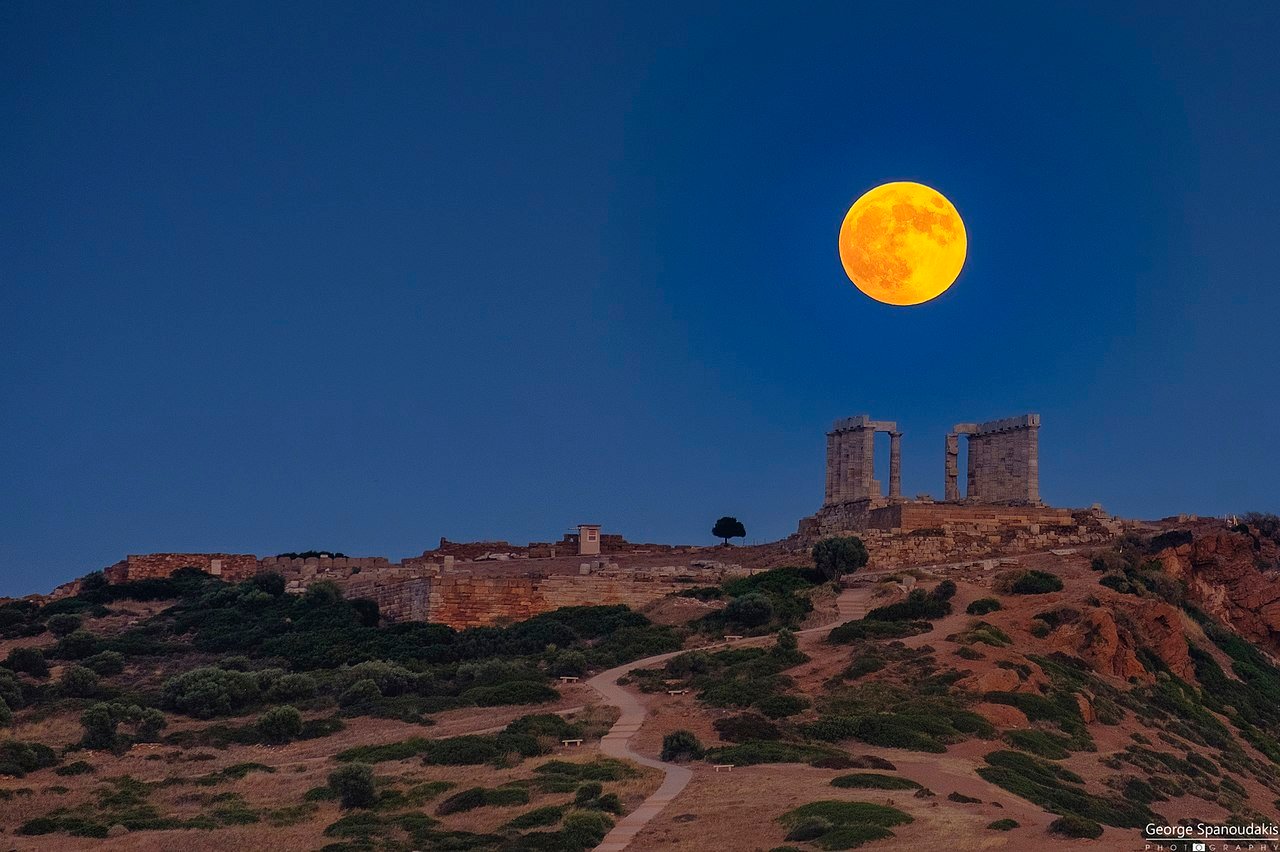
The blood moon over Greece on Friday night offered spectators majestic pictures that were so perfect that it would make even the greatest artists jealous.
Its appearance over Sounio and the Temple of Poseidon was a spectacle not to be missed, like the August full moon. The moon passed into the shadow of the earth for the largest lunar eclipse of the 21st century.
The full eclipse lasted for an hour, 42 minutes and 57 seconds, although it was preceded by a partial eclipse, which means the moon spent a total of three hours and 54 minutes in the shadow of the Earth, according to NASA.
The blood moon was visible from Europe, Africa, and the Middle East from sunset to midnight on July 27, and then from midnight to sunrise on July 28 in most parts of Asia and Australia.
Blood moon
A total lunar eclipse is sometimes called a Blood Moon, because of the reddish tinge the Full Moon takes on when fully eclipsed. The term is also frequently used to describe four total lunar eclipses that occur in a row.
Blood Moon is not a scientific term, though in recent times it is being widely used to refer to a total lunar eclipse because a fully eclipsed Moon often takes on a reddish color.
A total lunar eclipse happens when the Moon travels through the Earth’s umbra and blocks all direct sunlight from illuminating the Moon’s surface. However, some sunlight still reaches the lunar surface indirectly, via the Earth’s atmosphere, bathing the Moon in a reddish, yellow, or orange glow.
As the Sun’s rays pass through the atmosphere, some colors in the light spectrum—those towards the violet spectrum—are filtered out by a phenomenon called Rayleigh scattering. This is the same mechanism that causes colorful sunrises and sunsets.
Red wavelengths are least affected by this effect, so the light reaching the Moon’s surface has a reddish hue, causing the fully eclipsed Moon to take on a red color.
See all the latest news from Greece and the world at Greekreporter.com. Contact our newsroom to report an update or send your story, photos and videos. Follow GR on Google News and subscribe here to our daily email!



